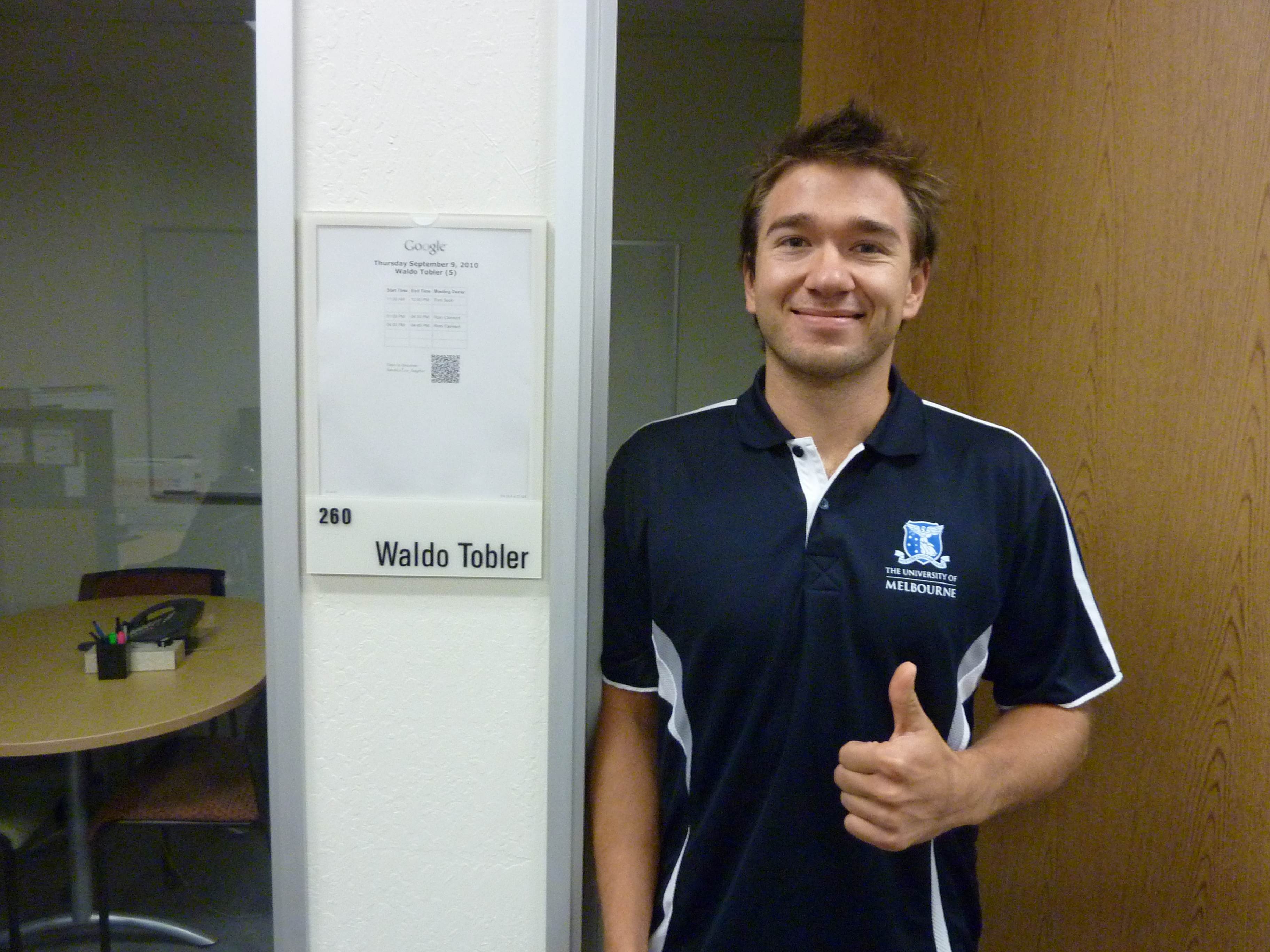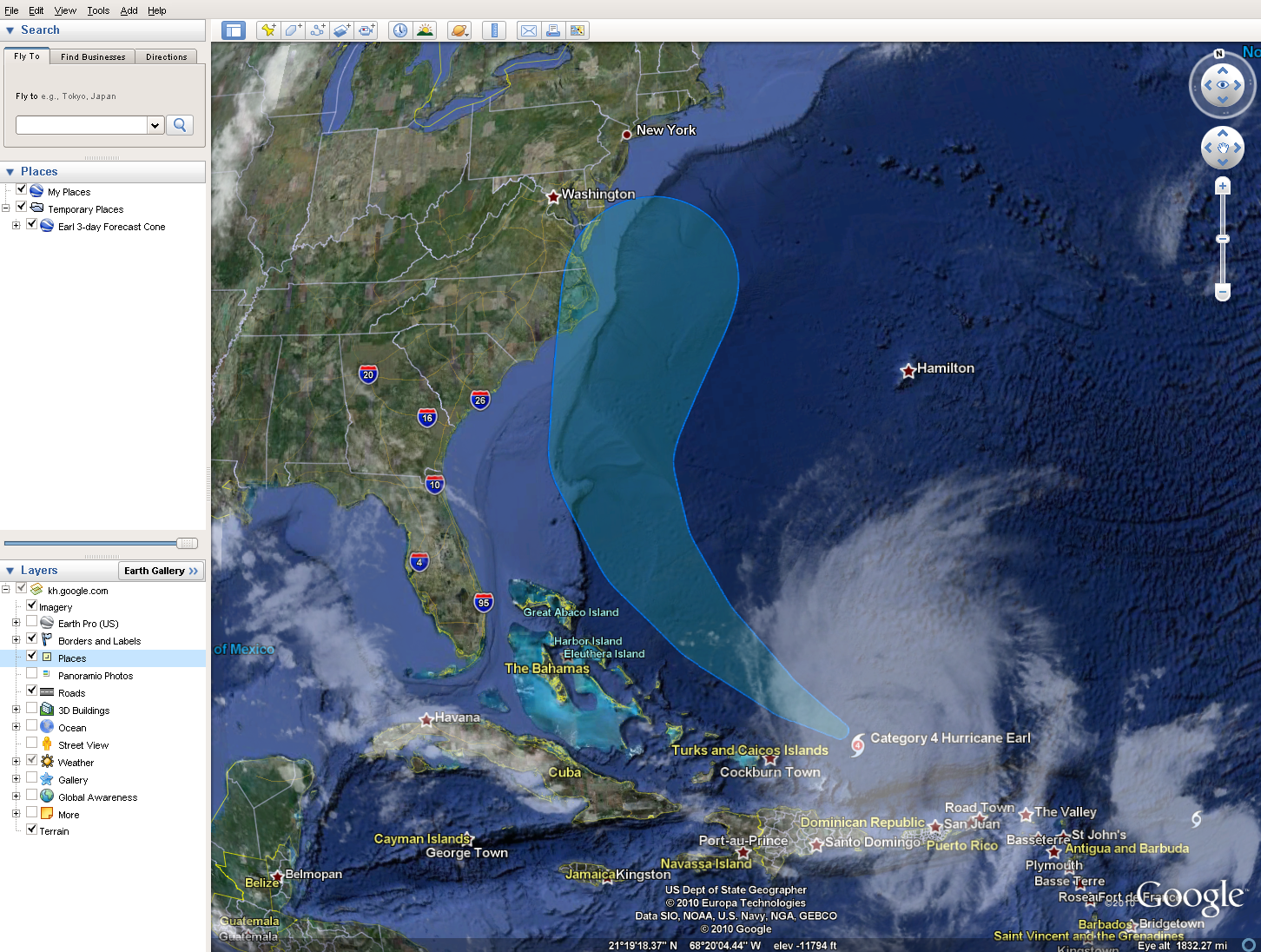Grad student Edward Pultar recently wrote to say that he’s just “finished a great summer in the Bay area working hard and learning a lot, ending with GIScience 2010 in Zurich last week, and now writing in Barcelona.” There’s no explanation regarding “writing in Barcelona,” but Ed did present two pieces of work at the GIScience 2010 Conference in Zurich, Switzerland, September 14-17, 2010, one in the extended abstracts portion of the (“Location-Based Social Network Capital”) and another in the doctoral colloquium segment (“The Synergy of Social, Transportation, Communication and Data Networks”).
Of course, the big news is Ed’s summer internship in the Bay area with Google. Google internships are hard to come by and highly coveted. According to the material Edward received, “Google Internships are full-time, paid positions. Start and end dates are flexible with regard to academic schedules, but you’ll be expected to commit to at least three months of full-time work. We want to make sure we provide you a valuable learning experience and a deeper understanding of Google’s work environment and culture…Intern Benefits include the following: mentoring and training; tech talks and company meetings; various on-site benefits, including free lunches and snacks; intern social events; and a competitive salary and relocation assistance.”
Ed must have made a good impression at Google headquarters because one of his fellow summer interns, Katie Corner, wrote him up in a Google “Lat Long Blog” (“news and notes by the Google Earth and Maps team”) titled “Geo Interns Close Out a Whirlwind Summer”:
“Summer meant sun, beaches and BBQs…but it also meant interns at Google! For the past few months, a smart and energetic group of students from colleges across the U.S. have been hard at work on a number of Geo-related projects. Many of the features they were working on are still in development or receiving their final touches. Shhh! But in the meantime, we wanted to share the timely accomplishments of GIS intern Edward Pultar, who’s currently in his last year of the Ph.D. program in the Department of Geography at the University of California, Santa Barbara. Between making new friends, participating in career-building workshops and, of course, enjoying meals that put dorm food to shame, Edward spent his summer working on new layers in Google Earth. Among the newly launched layers are those showing the floodplains, the Gulf of Mexico oil spill, and hurricane data. Since summer coincides with hurricane season in the Atlantic, the recent release of the hurricane layer has come just in time to help people in those regions – or people traveling to those regions – to see current, forecasted and historical information for tropical systems. That layer was certainly useful a few weeks ago when residents on the east coast were intently tracking the progress and path of Hurricane Earl. With summer now coming to close, we’ll miss the colleagues and friends we made at Google, but will proudly remember the contributions we made in 2010 to help make Google Earth and Google Maps useful resources for many years to come” (posted by Katie Corner, Summer Intern, September 17, 2010).





